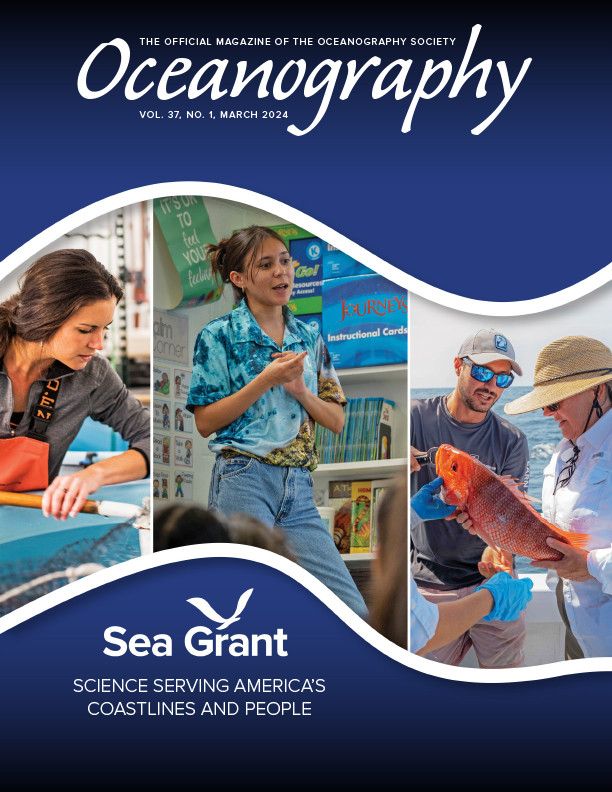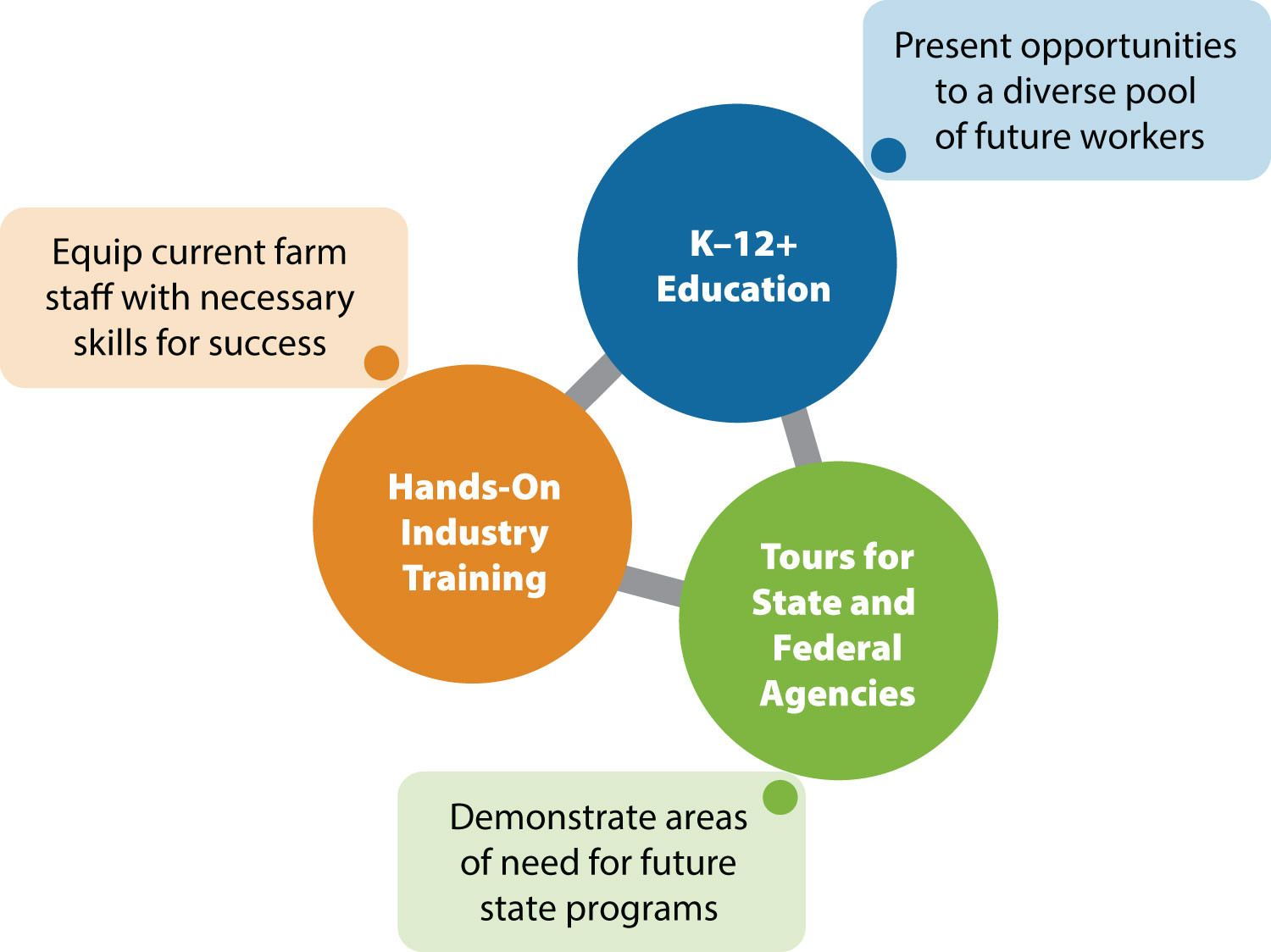Full Text
The oyster aquaculture industry presents employment opportunities for a range of skill sets, education levels, and backgrounds (Engle, 2021), including but not limited to farm owners/operators, farm workers, food safety specialists, engineers, regulators, and researchers. Labor challenges pose an obstacle to growth, driven in part by lack of awareness of job opportunities in domestic aquaculture and lack of a trained workforce prepared to drive the industry forward (Sandolo, 2021).
In 2016, Maryland Sea Grant (MDSG) and the University of Maryland Center for Environmental Science (UMCES) collaborated to plan, construct, and operate a demonstration oyster farm (DOF) to provide a space for oyster aquaculture industry training in the Choptank River, Maryland. Shellfish aquaculture workforce needs exist in both the short and the long term, and MDSG and UMCES organized a multi-pronged approach to support both temporal scales (Figure 1). To address short-term needs, workshops were held at the DOF for existing and prospective oyster farmers, offering hands-on education regarding husbandry skills and management techniques for multiple gear types. However, a major challenge posed to this industry is that of access; who is available to enter the workforce and how do people know about oyster aquaculture as a viable source of employment?
|
|
Sandolo (2021) noted that a lack of awareness about aquaculture was a major obstacle to the diversification of the Mid-Atlantic oyster aquaculture industry. The majority of aquaculture workers learn about it from a family member or acquaintance, and it is difficult to begin in oyster aquaculture without such contacts. To this end, we partnered with local community groups and schools to offer K–12+ students a variety of age-appropriate lessons regarding aquaculture as a form of agriculture and to provide information, along with hands-on learning, about the variety of job types available in oyster aquaculture. Further, agency staff visited the DOF to understand the skills used in oyster aquaculture and discuss future workforce training programs.
The DOF served as a site for 34 trainings or workshops with oyster farmers, provided hands-on education for some 17 student groups, and allowed 26 government or nongovernmental organizations to view and interact with oyster aquaculture. As the oyster aquaculture industry continues to grow, so too will training needs. Training facilities are one way universities can engage to enhance accessibility of the aquaculture industry and prepare a talented and diverse workforce to grow domestic aquaculture production.


